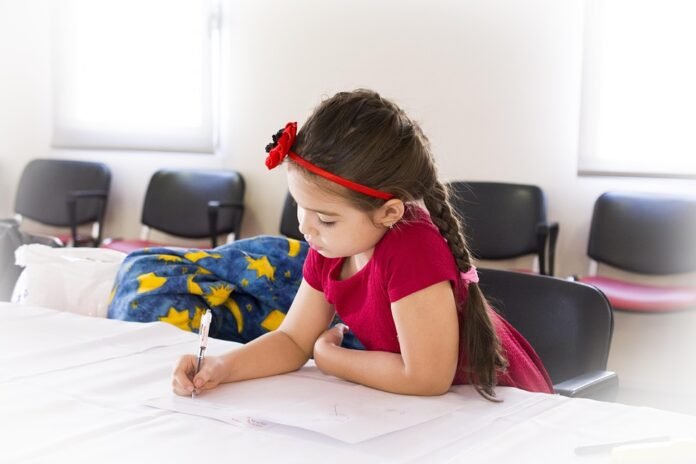Of course. Here is an article exploring the complexities of personalized learning.
Personalized Learning: The Ultimate Promise or an Impossible Dream?
For decades, the traditional classroom has operated on a factory model: students of the same age are grouped together, given the same instruction, and expected to progress at the same pace. We’ve all seen it—the bored, bright student doodling in their notebook, waiting for the class to catch up, and the struggling student, lost and falling further behind with each new lesson.
Enter personalized learning, the educational holy grail hailed as the solution to this one-size-fits-all problem. The concept is as elegant as it is ambitious: to tailor the educational experience—the content, pace, and path—to the unique needs, strengths, and interests of each individual student.
On paper, it’s a revolution. But in practice, is it the ultimate promise for the future of education, or an impossible dream that places an unbearable burden on our already-strained systems?
The Ultimate Promise: A Revolution in the Classroom
The proponents of personalized learning paint a compelling picture of an educational utopia.
1. Engaging the Unengaged: When students can connect what they’re learning to their own passions—whether it’s coding, ancient history, or marine biology—their motivation skyrockets. Instead of passively receiving information, they become active drivers of their own education. A student obsessed with video games could learn physics by designing a game engine, while another could master persuasive writing by launching a blog about climate change.
2. Closing the Gaps with Mastery-Based Learning: A core tenet of personalization is that students advance only when they have truly mastered a concept. This eliminates the “Swiss cheese” learning that plagues traditional models, where students are pushed forward with foundational gaps in their knowledge. Technology can provide immediate feedback and targeted practice until a skill is solidified, ensuring a strong foundation for future learning. Struggling students get the time they need, while advanced students can accelerate, preventing both frustration and boredom.
3. Fostering Future-Ready Skills: In a personalized environment, students aren’t just memorizing facts; they are learning how to learn. They develop agency, self-direction, and problem-solving skills as they navigate their unique learning paths. This ownership over their education is critical for fostering the adaptability and lifelong learning mindset required in the 21st-century workforce. The teacher’s role shifts from the “sage on the stage” to the “guide on the side,” a mentor who facilitates, challenges, and supports.
The Impossible Dream? The Practical Hurdles
For every dazzling promise, a shadow of practical challenges looms large, making many educators question if true personalization is achievable at scale.
1. The Riddle of Scale and Resources: The most glaring challenge is logistical. How can a single teacher realistically create, manage, and assess 30 distinct learning paths simultaneously? Without a massive influx of resources—including more co-teachers, specialists, and support staff—the idea of deep, meaningful personalization can quickly become a recipe for teacher burnout.
2. The Double-Edged Sword of Technology: EdTech is often positioned as the silver bullet for personalization. Adaptive algorithms can create individual learning playlists and track student progress. However, this reliance on technology raises serious concerns.
- The Digital Worksheet: Is the student truly on a personalized path, or are they just clicking through a glorified, algorithm-driven worksheet? Poorly implemented tech can isolate students and reduce learning to a sterile, screen-based activity.
- The Digital Divide: Meaningful personalized learning requires robust technology and internet access, both at school and at home. This creates a significant equity problem, potentially widening the very gaps it aims to close.
- Data Privacy: These platforms collect vast amounts of student data, raising critical questions about privacy, security, and how that information is used.
3. The Standardization Paradox: Our current education system is built on standardization. Standardized curricula, standardized pacing guides, and, most importantly, standardized tests are used to measure school and student success. How do we reconcile this system with an approach where every student is on a different path and timeline? Assessing progress in a truly personalized environment requires a fundamental rethinking of accountability.
4. The Loss of the Social Fabric: If every student is on their own device, following their own path, what happens to the collaborative, social aspect of learning? The shared experience of a classroom debate, a group project, or a collective “aha!” moment is a powerful part of education. An overemphasis on individual paths risks sacrificing the development of crucial social and teamwork skills.
Bridging the Gap: From Dream to Reality
The debate over personalized learning shouldn’t be a binary choice between a perfect system and the status quo. The truth is that the “impossible dream” becomes more attainable when we stop viewing it as an all-or-nothing proposition.
The path forward lies in a blended approach. It’s not about creating 30 separate lesson plans every day. It’s about a mindset shift, supplemented by smart strategies and tools. This can look like:
- Choice and Flexibility: Offering students choices in how they learn a topic or demonstrate their understanding (e.g., writing an essay, creating a podcast, or designing a presentation).
- Blended Models: Combining whole-group direct instruction with small-group work, collaborative projects, and individual time on adaptive software.
- Project-Based Learning: Allowing students to explore their interests through in-depth projects that naturally differentiate instruction.
- Empowering Teachers: Providing educators with the training, time, and autonomy to experiment with personalized strategies, rather than imposing a rigid, top-down model.
Personalized learning may not be a magic wand that can instantly fix every flaw in our education system. The utopian vision of a completely individualized education for every child remains, for now, on the horizon. But the pursuit of that vision—the commitment to seeing students as individuals, to offering them choice, and to meeting them where they are—is a powerful force for positive change.
The ultimate promise of personalized learning isn’t the destination of a perfect system, but the journey of making education more human, more engaging, and more effective, one student at a time.

